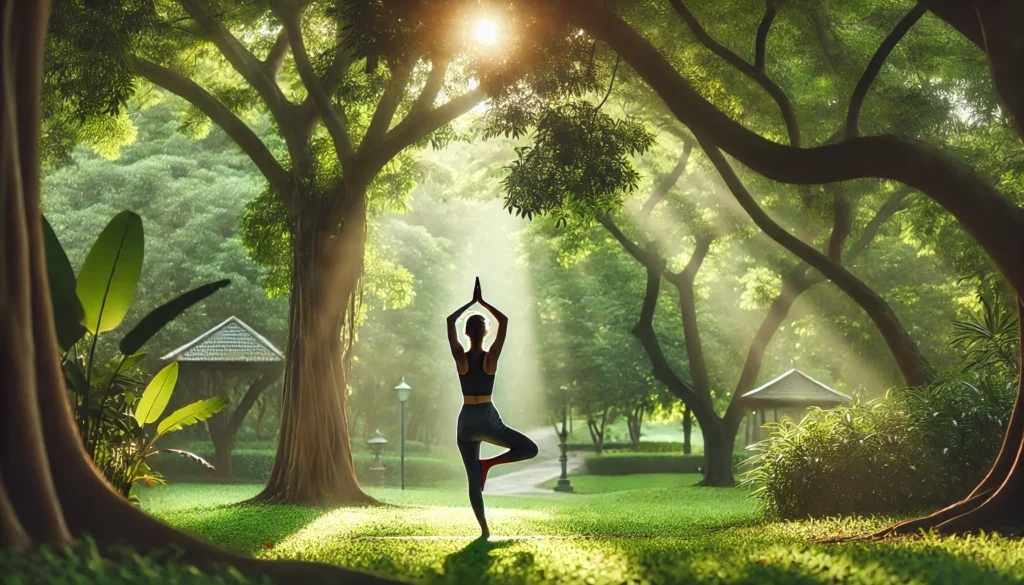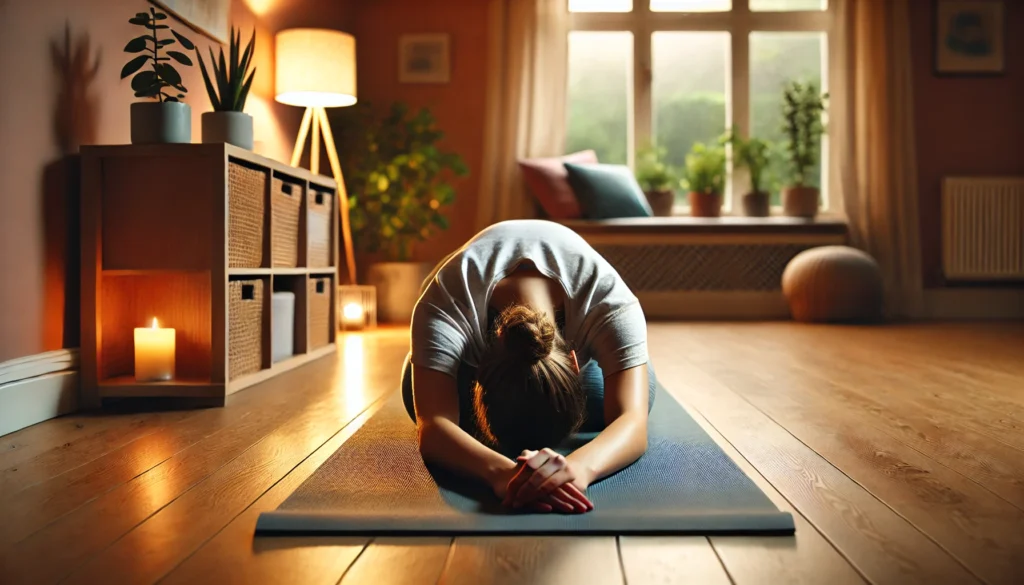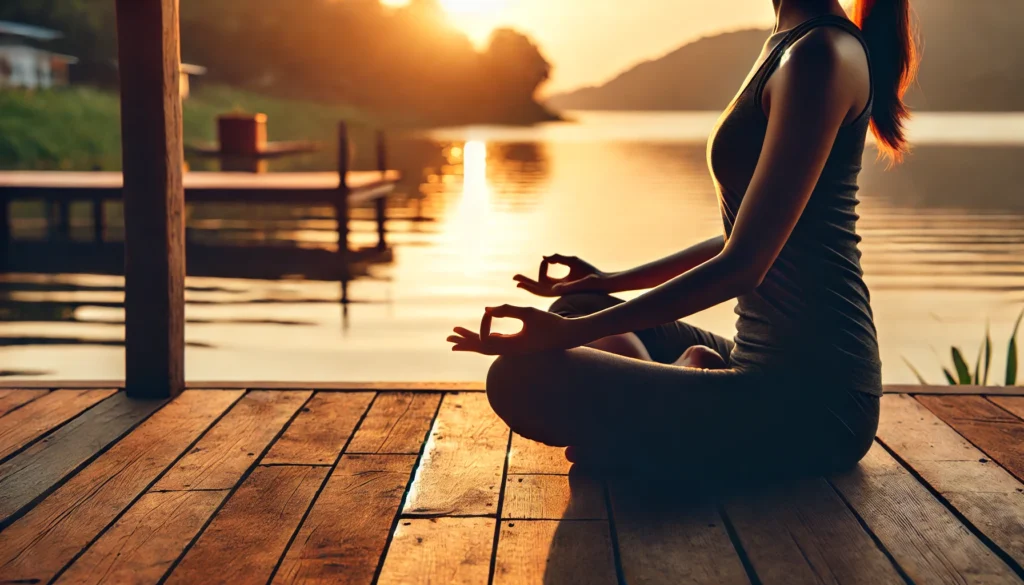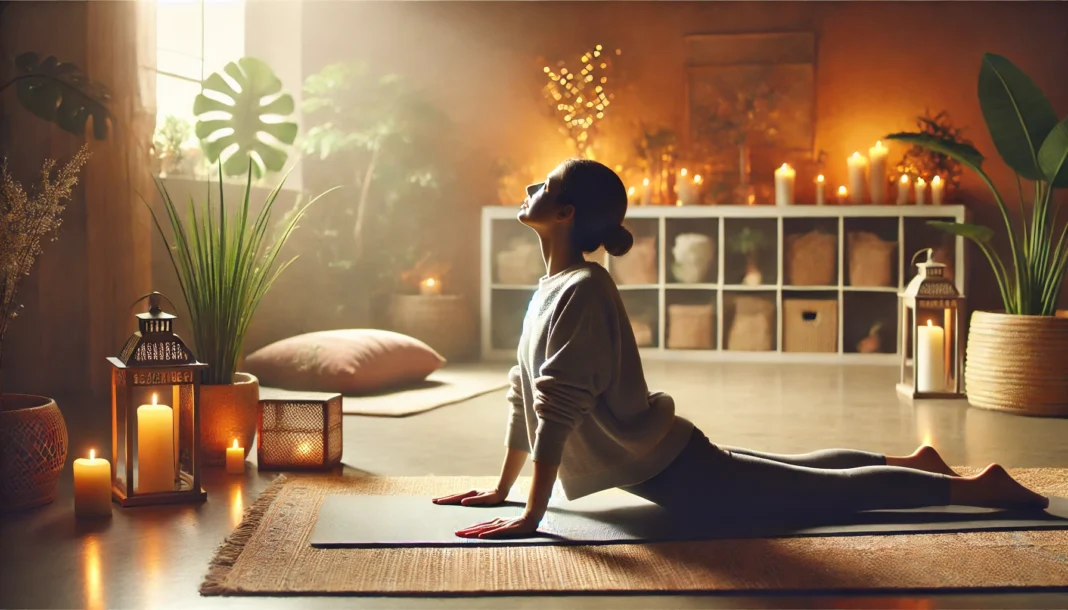Understanding the Connection Between Yoga and Mental Health
Depression is a pervasive mental health condition that affects millions of people worldwide, disrupting daily life and diminishing overall well-being. While conventional treatments such as medication and psychotherapy remain primary methods of intervention, many individuals seek complementary therapies to support their mental health. Yoga has emerged as a promising practice that fosters emotional balance, cognitive clarity, and overall mental resilience. Scientific studies have shown that yoga asanas for depression can regulate neurotransmitter activity, alleviate chronic stress, and promote relaxation, making it a powerful tool for managing depressive symptoms.
One of the fundamental ways yoga supports mental health is by reducing cortisol levels, the body’s primary stress hormone. Chronic stress and anxiety often exacerbate symptoms of depression, leading to fatigue, low motivation, and persistent sadness. By engaging in yoga depression anxiety practices, individuals activate the parasympathetic nervous system, which counteracts stress responses and encourages relaxation. The mindful movements, breath control, and meditative focus within yoga provide a holistic approach to mental well-being, addressing both physiological and psychological factors of depression.
You May Also Like: Yoga for Stress Relief: Best Poses to Calm Anxiety and Restore Balance
How Does Yoga Help with Depression? The Science Behind the Practice
The effectiveness of yoga for depression lies in its ability to influence brain function and emotional regulation. Research has demonstrated that yoga positions for depression stimulate the production of gamma-aminobutyric acid (GABA), a neurotransmitter associated with calmness and reduced anxiety. Low GABA levels are often linked to mood disorders, making yoga an effective natural intervention for emotional stability.
Additionally, yoga enhances neuroplasticity—the brain’s ability to form and reorganize synaptic connections in response to experiences. Through consistent practice, yoga encourages the growth of neural pathways that reinforce positive thinking, self-awareness, and emotional resilience. This neurobiological adaptability helps individuals combat negative thought patterns, making yoga an essential tool for cognitive restructuring. Furthermore, deep breathing techniques practiced during yoga enhance oxygen flow to the brain, supporting mental clarity and reducing symptoms of brain fog commonly associated with depression.

Yoga Poses for Depression: Calming and Energizing Asanas
Child’s Pose (Balasana)
Child’s Pose is a deeply restorative posture that provides immediate relief from stress and anxiety. By allowing the body to fold forward and the forehead to rest on the mat, this pose encourages a sense of surrender and inner calm. The gentle compression of the abdomen promotes diaphragmatic breathing, which activates the relaxation response and soothes the nervous system. This asana is particularly beneficial for individuals experiencing overwhelming or racing thoughts.
Bridge Pose (Setu Bandhasana)
Bridge Pose is an energizing backbend that stimulates the endocrine system, enhancing the production of serotonin and dopamine. These neurotransmitters are crucial for mood regulation and emotional balance. The gentle opening of the chest and expansion of the lungs in Bridge Pose encourage deep breathing, fostering relaxation and increased oxygen flow to the brain. This asana is especially effective in reducing fatigue and uplifting one’s mood.
Legs-Up-the-Wall Pose (Viparita Karani)
This pose is renowned for its ability to relieve stress and calm the mind. By elevating the legs and allowing gravity to promote circulation, this posture reduces symptoms of anxiety and promotes relaxation. Viparita Karani is a valuable addition to yoga depression anxiety practices, as it helps regulate the autonomic nervous system and restores equilibrium to the body and mind.
Seated Forward Bend (Paschimottanasana)
Seated Forward Bend encourages introspection and emotional release. This forward-folding posture soothes the nervous system and stretches the back, reducing muscular tension associated with stress. Practicing this asana fosters a sense of inward focus and relaxation, making it an effective yoga position for depression relief.
Corpse Pose (Savasana)
Often considered the most essential relaxation pose, Corpse Pose allows the body to fully integrate the benefits of yoga practice. By lying in complete stillness, individuals engage in mindful awareness, releasing accumulated stress and tension. Savasana enhances the body’s ability to rest and recover, making it an essential component of yoga poses for stress and depression management.

Can Yoga Help with Depression? Examining the Long-Term Benefits
The question of whether yoga can help with depression is met with strong scientific support. Longitudinal studies have found that individuals who engage in regular yoga practice experience sustained improvements in mood, reduced anxiety, and increased overall well-being. Unlike pharmacological interventions, which often come with side effects, yoga provides a natural and sustainable method for managing mental health.
In addition to its physiological benefits, yoga fosters a sense of community and connection. Group yoga sessions provide social support, reducing feelings of isolation that often accompany depression. The emphasis on mindfulness and self-compassion in yoga practice cultivates a more positive self-image, helping individuals develop a healthier relationship with their thoughts and emotions. Over time, these benefits compound, creating lasting resilience against depressive symptoms.
Integrating Yoga into a Holistic Mental Health Routine
For those looking to incorporate yoga asanas for depression into their daily lives, consistency is key. A well-rounded yoga routine should include a combination of dynamic postures, restorative poses, and mindfulness practices. Beginners may benefit from attending guided classes, while more experienced practitioners can develop a self-led practice tailored to their specific needs.
Combining yoga with complementary practices such as meditation, journaling, and breathwork can enhance its effectiveness. Engaging in deep breathing exercises before bedtime can improve sleep quality, while morning yoga sessions can set a positive tone for the day. As individuals develop greater body awareness and emotional regulation through yoga, they gain tools that empower them to navigate stress and depression with greater ease.

Frequently Asked Questions (FAQ) on Yoga Asanas for Depression
1. How do yoga asanas for depression compare to traditional therapy?
Yoga and traditional therapy serve different yet complementary roles in mental health treatment. While psychotherapy helps individuals address deep-seated thought patterns and emotional distress, yoga asanas for depression offer a physical and neurological approach to managing symptoms. Research indicates that practicing yoga poses for depression reduces cortisol levels and increases serotonin production, which can enhance emotional stability. Unlike talk therapy, which primarily focuses on cognitive restructuring, yoga engages the body in stress reduction and self-regulation. When used together, therapy and yoga provide a holistic mental health strategy that addresses both the mind and body.
2. Can yoga help with depression even if I have never practiced before?
Absolutely. Yoga depression anxiety practices are accessible to beginners and can be modified to fit individual needs. Many yoga positions for depression focus on slow, intentional movements and deep breathing rather than intense physical exertion. Starting with simple postures like Child’s Pose or Legs-Up-the-Wall allows new practitioners to experience the calming effects of yoga without feeling overwhelmed. As individuals progress, they can gradually incorporate more dynamic movements to further support mental well-being.
3. Does yoga help with depression differently than aerobic exercise?
Yes, while both yoga and aerobic exercise improve mood, they do so through different mechanisms. Aerobic exercises such as running or cycling increase endorphin levels, providing an immediate but temporary boost in mood. In contrast, yoga asanas for depression regulate the nervous system, promote mindfulness, and encourage neuroplasticity, leading to long-term emotional stability. Additionally, yoga reduces physical tension and improves breath control, which can further alleviate symptoms of anxiety and depression. Combining aerobic exercise with yoga may yield the best results by addressing both immediate and long-term mental health needs.
4. What role does breathwork play in yoga depression anxiety relief?
Breathwork, or pranayama, is a fundamental component of yoga asanas for depression that helps regulate the nervous system. Techniques such as diaphragmatic breathing and alternate nostril breathing activate the parasympathetic nervous system, reducing stress and enhancing relaxation. Deep breathing also increases oxygen flow to the brain, which improves mental clarity and mood stability. Many yoga poses for depression incorporate breath awareness to deepen the practice’s calming effects. Regular breathwork can help individuals manage acute anxiety episodes and create long-term resilience against depressive symptoms.
5. Can yoga positions for depression support cognitive function?
Yes, yoga depression anxiety practices have been shown to enhance cognitive function and mental clarity. Research indicates that regular yoga practice stimulates neuroplasticity, allowing the brain to form new neural connections that improve focus and memory. Additionally, yoga positions for depression increase blood flow to the brain, which supports cognitive performance and reduces mental fog. Yoga’s emphasis on mindfulness also helps individuals stay present, reducing ruminative thinking patterns common in depression. Over time, practicing yoga can lead to improved decision-making skills and greater emotional regulation.
6. Is there a specific time of day when yoga poses for depression are most effective?
The best time to practice yoga asanas for depression depends on an individual’s symptoms and lifestyle. Morning yoga can help set a positive tone for the day by increasing energy levels and promoting mental clarity. Evening practice, on the other hand, is beneficial for those struggling with sleep disturbances, as yoga poses for depression help regulate circadian rhythms and encourage relaxation. Midday yoga sessions may be useful for individuals who experience energy dips or heightened stress in the afternoon. Experimenting with different practice times can help determine what works best for each person’s mental and physical needs.
7. How do yoga positions for depression influence financial decision-making?
While it may seem unrelated, stress and anxiety often lead to impulsive or avoidance-based financial decisions. Engaging in yoga depression anxiety practices helps individuals develop a calm and focused mindset, allowing for more rational financial choices. Certain yoga asanas for depression, such as Seated Forward Bend, encourage introspection and patience, which can support thoughtful money management. Additionally, breathwork techniques practiced in yoga improve impulse control, reducing emotional spending habits. Over time, yoga can foster mindfulness, which extends into responsible financial planning and stress-free money management.
8. Does yoga help with depression in individuals experiencing burnout?
Yes, yoga poses for depression are particularly effective in addressing burnout, which often overlaps with depression and anxiety. Chronic stress from work or personal responsibilities depletes mental and physical energy, making it difficult to function. Practicing yoga asanas for depression helps regulate stress hormones, improve sleep quality, and restore energy levels. Restorative poses, such as Legs-Up-the-Wall and Corpse Pose, allow the nervous system to reset, alleviating exhaustion. Integrating yoga into daily life can serve as a preventative measure against burnout, promoting long-term emotional resilience.
9. Can yoga asanas for depression help regulate appetite and digestion?
Depression often disrupts appetite and digestion, leading to either overeating or loss of interest in food. Certain yoga positions for depression, such as twists and gentle forward bends, stimulate the digestive system and improve gut health. Additionally, stress-reducing yoga helps balance cortisol levels, which can prevent emotional eating patterns. By practicing yoga depression anxiety postures that promote relaxation, individuals may find a more natural, intuitive relationship with food. Over time, yoga fosters a balanced mind-body connection that supports healthy eating habits and digestion.
10. How can beginners incorporate yoga for depression into their daily routine?
Starting a daily yoga asanas for depression routine does not require extensive experience or long practice sessions. Beginners can start with simple poses such as Child’s Pose, Bridge Pose, and Seated Forward Bend for just 10–15 minutes per day. Guided online sessions focusing on yoga depression anxiety can provide structure and ensure proper form. Setting aside a specific time each day for practice creates consistency, which is essential for long-term benefits. Over time, individuals can explore more advanced poses and meditation techniques to deepen their practice and further support their mental health.
Final Thoughts
Yoga offers a powerful, holistic approach to mental well-being, providing individuals with tools to manage depression, reduce anxiety, and cultivate emotional resilience. Scientific research continues to validate its effectiveness in regulating mood, enhancing cognitive function, and improving overall psychological health. The integration of breath, movement, and mindfulness in yoga depression anxiety practices fosters a balanced state of mind, supporting long-term emotional well-being.
For those struggling with depression, yoga presents a natural and accessible solution that complements traditional treatment methods. Whether practiced in a studio or at home, yoga has the potential to transform mental health by fostering relaxation, enhancing neuroplasticity, and strengthening emotional resilience. By incorporating yoga poses for depression into daily life, individuals can take proactive steps toward improved mental health and overall well-being.
yoga asanas for depression, yoga depression anxiety, yoga poses for depression, does yoga help with depression, yoga positions for depression, can yoga help with depression, yoga for mental health, holistic mental wellness, mindfulness and yoga, stress relief through yoga
Further Reading:
Yoga for Depression: 9 Poses to Try
The Effect of Yoga on Stress, Anxiety, and Depression in Women
Effectiveness of yoga for major depressive disorder: A systematic review and meta-analysis

